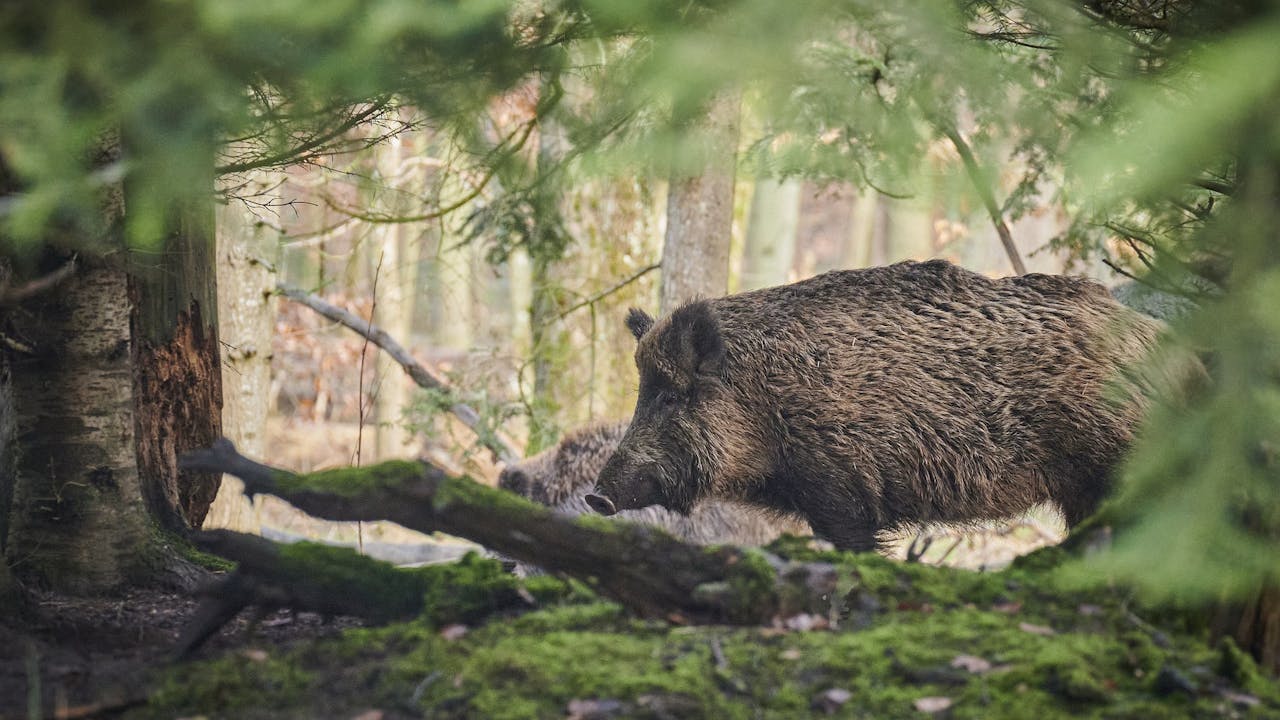Wild boar
The wild boar is the ancestor of the domestic pig and is also called a wild boar. A male is called a “keiler,” the female a “sow,” a group is called a “rotte” or “rotte,” and piglets are called “frislingen.” The wild boar became extinct in the Netherlands in the 19th century, but was reintroduced by Prince Hendrik. Today, established populations exist in the Veluwe region, Limburg, East Brabant, and near Nijmegen. The wild boars in Lelystad Nature Park live in a large, spacious enclosure with mud pools, forest, grassland, and a pond, and behave like wild animals.
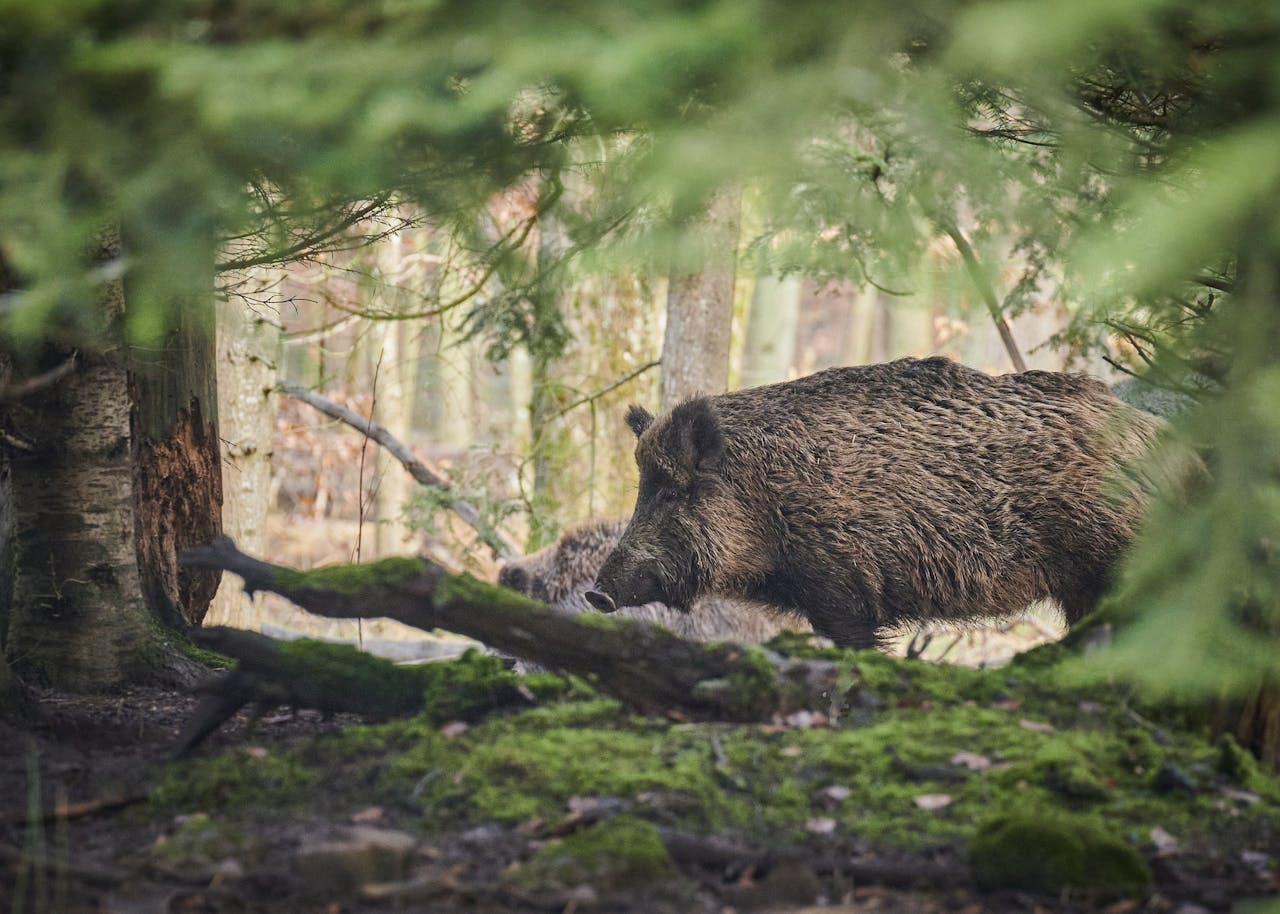
The wild boar has a dark, bristly coat with a thick undercoat. In the spring, the wild boar sheds its fur and grows a shorter, lighter coat. It has a stocky body and an elongated head with a flattened, strong snout. Its ears are broad, erect, and hairy, and it has small eyes. The tail is straight and quite long, and adults have a tuft on it. An adult male has two tusks. These are the two canines in the lower jaw that point upward. The upper canines are also strongly developed and point upward. The older a male, the further these canines extend upward. The male has a four-centimeter-thick layer of cartilage over its chest, which serves as protection for the lungs and heart during fights. Young wild boars have a blackish-brown coat with golden-yellowish stripes. These run from front to back across the back.
Name: Wild boar Species name: Sus Scrofa Family: pigs Habitat: Europe, Asia, and North Africa Length: 1.20 to 180 cm Height at the withers: 90 cm Weight: Varies between 80 and 300 kg Food: Tubers, plant roots, berries, nuts, grass, clover, crops, and animal feed
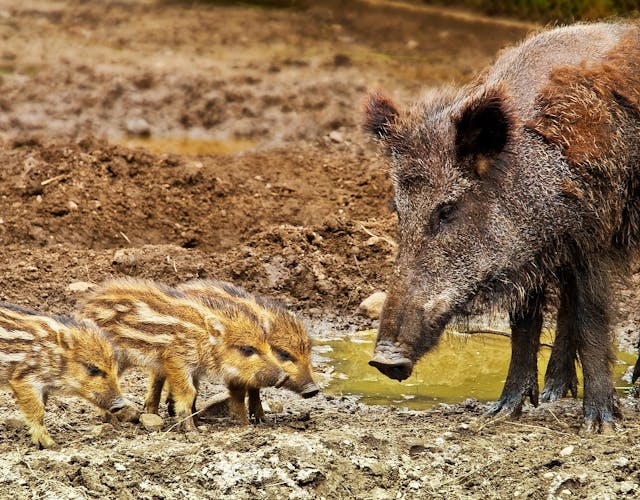
Inhabitant of nutrient-rich forests
The wild boar originally lived throughout Europe (north to southern Scandinavia), northwest Africa, and large parts of Asia, from Ireland to Japan and Java. It has been introduced to England, Sweden, the United States, Australia, and several Pacific islands. The wild boar inhabits dry and wet nutrient-rich deciduous and mixed forests. It has a clear preference for oak and beech forests, as they provide abundant acorns and beechnuts (the so-called “mast”) in autumn. Males are larger than females. In the north, wild boars grow heavier than in the south, where males sometimes weigh up to 200 kg. Body weight also depends on habitat. In the Netherlands, wild boars generally do not exceed 120 kg.
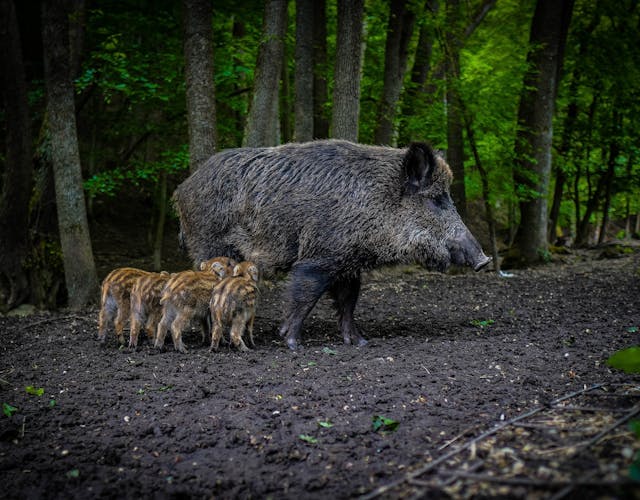
Nocturnal animals
A wild boar is a true nocturnal and crepuscular animal. It can travel great distances of up to fifteen kilometers in search of food. Wild boars are adept at digging with their snouts and forelimbs, turning over large areas of forest land. They are popular with some foresters for this, as they create seedbeds for natural regeneration. Turning over their fields is, of course, not beneficial for farmers.
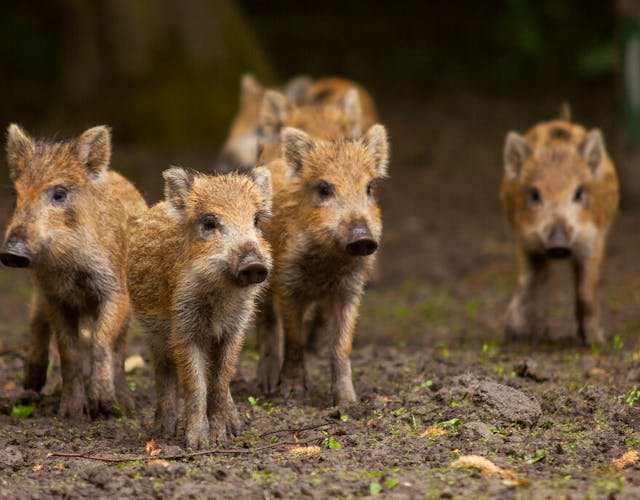
A good nose and poor eyesight
A wild boar has keen hearing and a good sense of smell, but poor eyesight. Wild boars live in groups, also called rotte, of up to thirty animals. A rotte consists of several females and their young of the first and second year. Males live alone from the age of three. Within the rotte, there is a clear hierarchy, with the males at the very bottom of the hierarchy.
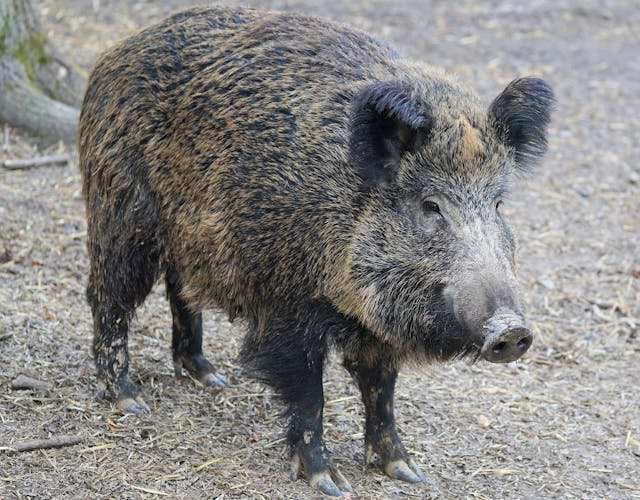
Rolling in the mud
To care for their skin and fur, wild boars take mud baths, also known as wallowing. After this bath, a layer of mud remains on their skin. By rubbing against trees, they not only remove this layer of mud but also skin parasites. The rubbing trees are located near the mud bath, are scoured 50-60 cm above the ground, and have become discolored and polished by frequent use. A mud bath is created in naturally wet areas. Often, you can find prints, rubbing trees with hair, droppings, and rooting marks in the area. Wallowing marks are also used by red deer; the marks on the tree can reach up to 2 meters high. In the wild boar enclosure in Lelystad Nature Park, the wallowing and rubbing marks are clearly visible.
A wild boar is omnivorous. It eats primarily plant-based foods such as acorns, chestnuts, grass, tubers, roots and truffles, fruits, berries, and green plant parts. But they also eat animal food such as carrion, earthworms, insect larvae, amphibians, birds, and small rodents. They usually root around with their snouts in the forest floor to search for food. They can find food underground by smell.
Did you know? - Wild boars don't have a territory. They roam in search of food. - During the day, wild boars rest in dense cover, preferably in dry, young brush. - In February, March, or April, a female creates a nursery: a hole several decimeters deep into which she drags backing plant material such as grass, foliage, and moss. This is where the piglets (also called frislings) are born. - In the Netherlands, the biggest threats are traffic and hunting.
